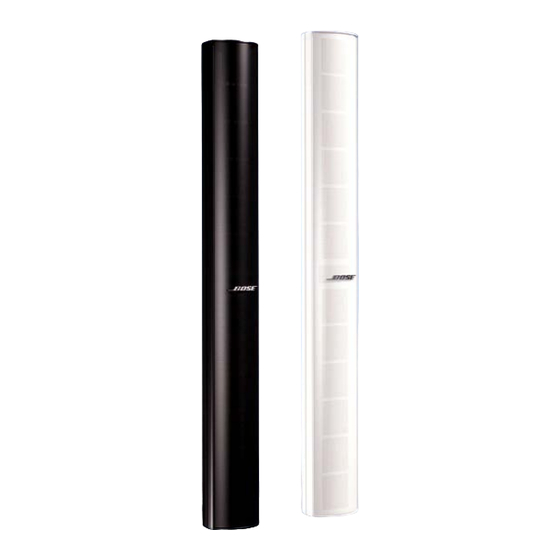Bose Panaray MA12 Landasan Teknis & Diskusi - Halaman 24
Jelajahi secara online atau unduh pdf Landasan Teknis & Diskusi untuk Pembicara Bose Panaray MA12. Bose Panaray MA12 36 halaman. Modular line array loudspeaker
Juga untuk Bose Panaray MA12: Panduan Pengguna (2 halaman), Panduan Instalasi (16 halaman), Panduan Instalasi (8 halaman), Panduan Instalasi (7 halaman), Panduan Servis (11 halaman)

speaker can be mounted high on a wall and the radiation pattern steered down to the audience
area on the floor.
Why did Bose elect not to use
sought a pure wedge-shaped radiation pattern, not a variety of different, selectable radiation
patterns. We did this so that we could cover a large audience area from a speaker located at
ear height. For this, no
high in the air is needed, then this seems to us an ideal application for traditional hang-and-
tilt speakers, which have shown in countless facilities to meet basic customer requirements at
a fraction of the cost of using many channels of
effect.
High-output arrays for touring systems
T
is a class of speakers that use much larger and more powerful transducers in much
HERE
larger enclosures than what is used in the MA12 . As a result, these speakers are much larger,
and more expensive than the MA12. As a result– in addition to the differences in transducer
complements - the most important difference between these speakers and the MA12 is the
markets for which they are intended. They are very clearly aimed at large touring sound
systems for musical groups playing in stadia and arenas. The MA12 is aimed at the heart of
the installed sound market. While philosophically similar, these products are far too large, far
too powerful, and far too expensive for our target markets.
Column like speakers
T
last category is speakers that look like line arrays but really are not. They are really
HE
spherical-wave sources housed in line-shaped enclosures. This is not to say that the
manufacturers are making false claims, but merely to note that a line-shaped source may not
house an acoustical design intended to behave like the line sources we have discussed here.
An example of these speakers uses four 4" (10.2 cm) drivers and three tweeters in a line.
This design and others like it, while having features that can have advantages in certain
applications, do not attempt to achieve pistonic behavior over the length of the line and over
a wide range of frequencies. The four drivers in this configuration could be too widely spaced
for this purpose, for example. Similarly the tweeter array in the middle may not be tall
enough to produce a wedge-shaped radiation pattern at the lower part of its frequency range;
the array is simply not tall enough, and the drivers not densely- packed enough. These
speakers behave more like conventional loudspeakers, albeit with narrower vertical radiation
patterns.
®
Bose
MA12™ Modular Array: Technical Foundation & Discussion
April 2002, © Bose Corporation, All Rights Reserved
in the MA12™ Modular Array ? First, in our solution we
DSP
is needed and thus none is used. Second, if a speaker positioned
DSP
Page 24 of 36
and amplification to achieve the same
DSP
